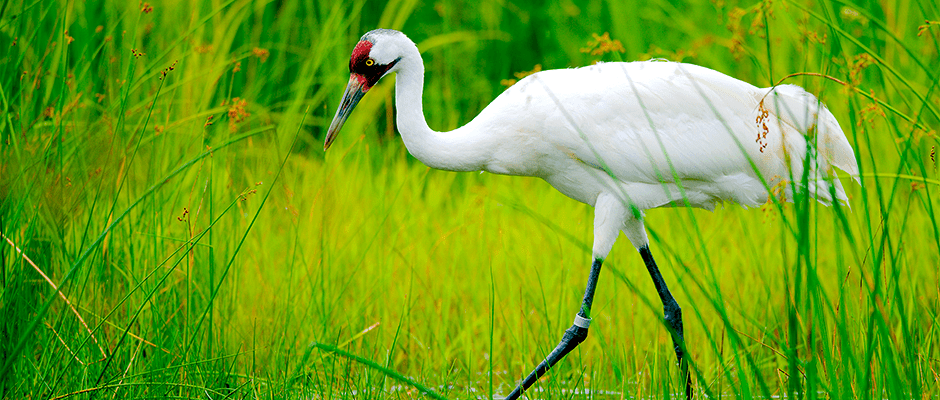Share this article
New model suggests prime habitat for whooping cranes
Lands conserved for waterfowl in North and South Dakota provide habitat for critically endangered whooping cranes (Grus americana) as they pass through on their migration from Canada to Texas, according to new research.
In a study published in The Condor: Ornithological Applications, researchers used opportunistic data that included whooping crane sightings in the region since 1990 to develop a habitat selection model that accounted for biases in the data. Information from a smaller group of whooping cranes tagged with transmitters confirmed the success of their approach.
“Millions of wetlands make the Prairie Pothole Region an important area for waterfowl,” said Neal Niemuth, a wildlife biologist with the U.S. Fish and Wildlife Service’s Habitat and Population Evaluation Team and lead author of the study. “Waterfowl conservation efforts in the region have provided benefits over a broad landscape, which differs from other portions of the migration corridor where habitat is localized and landscape-level conservation efforts are limited.”
While an equal area of land was protected west of the Missouri River in the study area, the value of those lands to whooping cranes was much lower than that of protected lands east of the river, Niemuth said.
After analyzing the data, the team created distribution models, often called “thunderstorm maps,” which resemble radar data and show species distributions. The team found that whooping cranes preferred a mix of cropland, grasslands and wetlands and were more attracted to a single large wetland basin than many small basins, all following a north-south migration corridor.
Niemuth said the model could be used for conservation planning. “People can use it as a targeting tool,” he said. “There’s been a huge loss of grasslands and wetlands as area of cropland has expanded. This model will help conservationists target places to purchase perpetual easements to protect habitat. The model is also available to developers, who can use it to avoid areas with high value to whooping cranes.”
Header Image: Whooping cranes spend time in a mix of cropland, grasslands and wetlands. Researchers found the species’ preferred habitat in North and South Dakota on their migratory journey. ©Josh More








